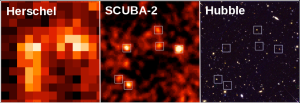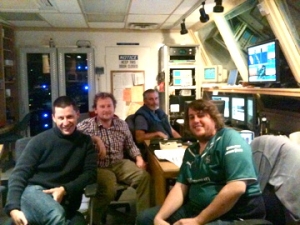
The high mass star forming region, DR21, as imaged by SCUBA-2 at 450µm
The following announcement was recently made by Prof. Gary Davis, Director of the Joint Astronomy Centre, to the JCMT community. It marks an incredibly important milestone in the project.
To the JCMT observing community,
It is with great pleasure that I write to announce the imminent
release of SCUBA-2 for science observing!
We are now in the final stages of commissioning the instrument on the
JCMT, and I anticipate formally accepting ownership from the UKATC by
the end of this month. Accordingly, the instrument will be available
for science starting on 1st October.
The JCMT Board have determined that the JCMT Legacy Survey (JLS) is
the highest priority for the scientific use of SCUBA-2 and for the
exploitation of its unprecedented capabilities. Consequently, the
usage of SCUBA-2 during the first four months will focus exclusively
on this programme. The coordinators of the JLS projects are already
well aware of this and arrangements for the Science Verification phase
(the precursor to JLS observing) are coming together nicely.
With our initial focus on getting the JLS programme up and running, PI
access to SCUBA-2 will commence in semester 12A. We have recently
issued two announcements to this list, alerting potential PIs to the
timetable. As a reminder, the Call for 12A Proposals will be issued
on 30th September and the proposal deadline will be just two weeks
later, on 14th October. I am grateful to the national TAGs and the
ITAC for agreeing to an accelerated timetable for the time allocation
process on this occasion.
This Call will contain explicit instructions for calculating the
observing time required to reach a given depth over a given map area,
and as such the Call will represent our first public statement of the
sensitivity of the instrument.
I am of course well aware that the community has been awaiting the
release of SCUBA-2 for several years. It has been a long and winding
road to reach this point, and I thank you for your patience. I have
every expectation that it will prove to be a success!
Best regards,
Gary Davis,
Director JCMT.







